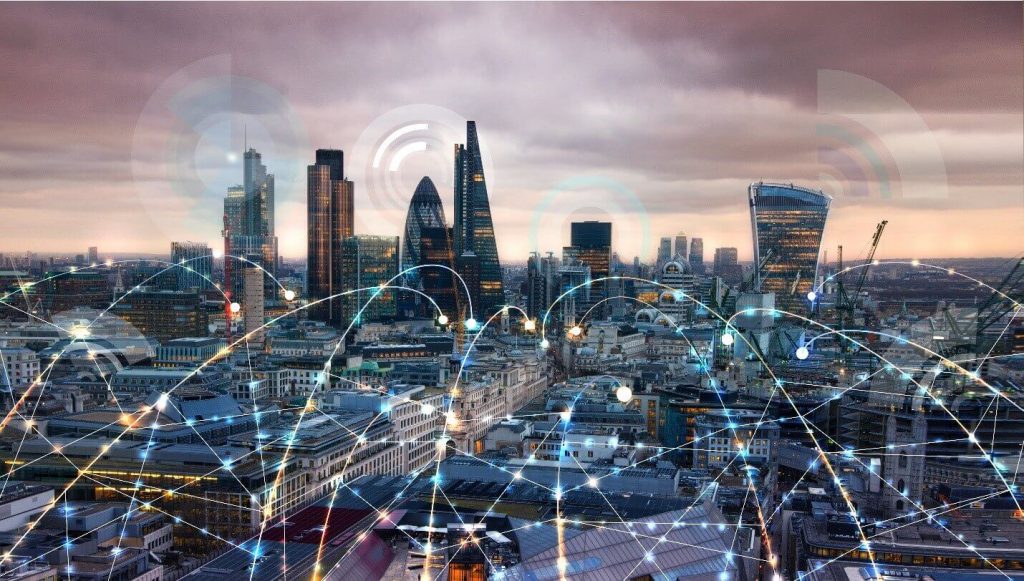Physical Security’s Role in Digital Transformation
The Process of Departmental Collaboration
As threats become more sophisticated, organizations are being forced to take a long, hard look at how to best protect their facilities, people and data from physical intrusions and cyberattacks. Sometimes, these are even happening simultaneously. In the first of this three-part series, we focus on process and the need for departmental collaboration, highlighting security’s role in digital transformation.

A Two-Pronged Attack
The need for departmental collaboration to mitigate security issues is reflected in this all-too-likely scenario:
- At 2 a.m., the doors of a large organization are breached, and the security officer gets an alert.
- Three minutes later, the cyber team gets an alert that someone is trying to overload the network.
The Need to Digitize
Digital transformation, the use of technology to fundamentally improve performance or reach, has become an obligatory upgrade for companies across the globe. The strategy to digitize is shaping entire businesses and creating huge opportunities. A successful digital transformation is not just about implementing new technologies but transforming your organization to take advantage of the opportunities those new technologies provide. Digital transformation initiatives should be focused on reimagining customer experience, operational processes, and most importantly, the transformation of your business model.
Our insights reveal that digital transformation does not happen organizationally from the bottom up; it must be driven from the top down. Digital transformation is not just a technology change, but an organizational one, and therefore a change that must start with your leadership. This requires leaders to upend entire business models to envision how people, data, and processes can create value for their customers. This is a moment for leaders to rethink how their organizations work.
Security and Disruptive Technologies
Security within an organization is critical and almost always operates in a silo; physical security’s focus is on mission-critical, life safety events, while IT’s focus is on logical threats. Little coordination occurs when a threat impacts both worlds, as noted in the example above.
From a physical and cyber security perspective, industries are technically capable to quickly assess and address threats independently without the previous layers of reporting and approval protocols slowing down a response. Coordination and collaboration warrant a commitment to a digital transformation initiative.
We have identified four major innovation areas that can be leveraged by the adoption of transformative digital technology:
- Machine learning-based rules monitoring. Machine learning is used to analyze much more data than a human. Increasingly, machine learning algorithms are used to make operational conclusions, making decisions and acting on them, sometimes without human intervention, which streamlines the business process.
- Asset-focused proactive risk modeling. Threat modeling is how potential threats can be identified, enumerated, classified, and mitigated. It is a proactive approach used to understand how different threats and attacks could be realized. The purpose of threat modeling is to provide security teams with a systematic analysis of what countermeasures need to be implemented given the nature of the asset, the most likely attack vectors, and the assets most sought after by an attacker.
- Collaborative incident management. The process of dealing with an outage, service disruption, or other large incident from its inception to completion is known as incident management. While this definition may appear straightforward, the lifecycle management process is extremely complex, requiring cross-team collaboration, disparate technologies, and distributed systems to resolve issues quickly without jeopardizing the customer experience, brand reputation, or most importantly, the company’s bottom line.
- Highly secure, cloud-based architecture. In a cloud computing architecture, all applications are controlled, managed, and served by a cloud server. Its data is replicated and preserved remotely as part of the cloud configuration. A well-integrated cloud system can create nearly limitless efficiencies and possibilities.
Takeaway
These innovations will help deliver a key mission for life safety, employee security, and asset protection. Put differently, after you decide which digital path to take based on predefined and machine–learned rules, this will positively affect your physical and cyber operation teams by delivering a holistic picture of threats with deeper event collaboration.
Delve into the strategic management of IoT in the realm of digital transformation, exploring how it enhances overall safety and security, and Take proactive measures to secure your digital infrastructure with insights on administration and effective device mitigation.
About Atriade
Atriade Atriade has worked on over 500+ projects, in 60+ industries, in 30+ countries. If you are ready to get expert assistance in creating your governance plan that will set you apart from your competitors, we are here to help. Our management team carries a lifetime of experience in all areas of Physical Security and Electronic Security that we are ready to put to work for your unique business and team.
Our expert team at Atriade has helped countless organizations address security’s role in digital transformation at their facilities. Contact Us if you would like to discuss your situation.
Visit us online at Atriade.com
Connect with us on LinkedIn
Subscribe to our LinkedIn Newsletter: Take A Risk
- Categories:
- Blog,
- Technology Trends
